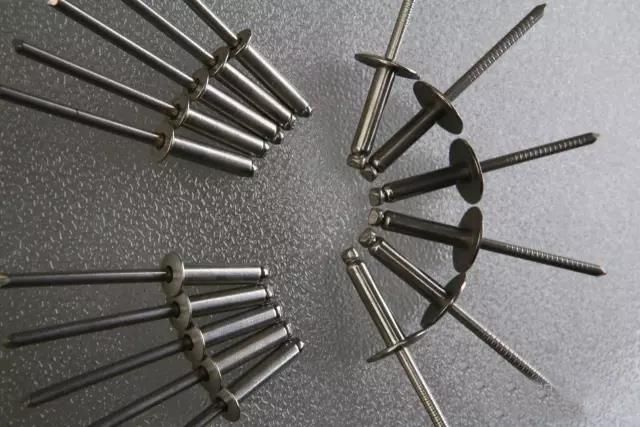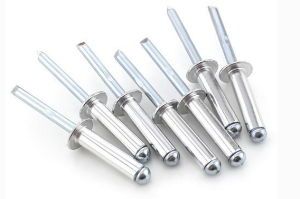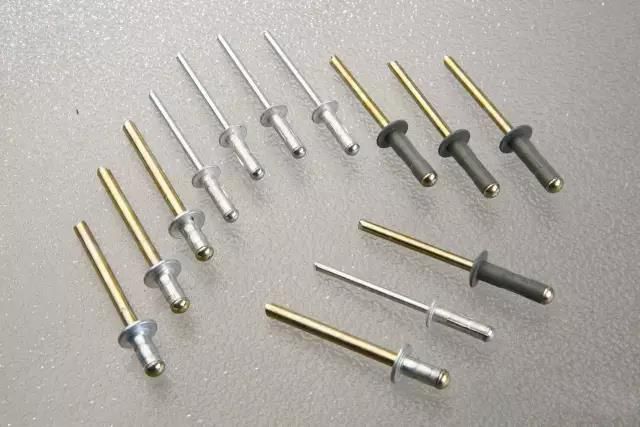The blind rivet is a kind of flying rivet for single-sided riveting, but it must be riveted with a special tool-pulling rivet gun (manual, electric, automatic). This type of rivet is especially suitable for riveting occasions where it is inconvenient to use ordinary rivets (riveting from both sides), so it is widely used in products such as buildings, automobiles, ships, aircraft, machinery, electrical appliances, furniture, etc.
Advantages of pop rivet equipment:
The blind rivet has a wide range of riveting, rapid installation, stable and reliable performance, and is widely used in the processing and manufacturing industries around the world. The main advantages of its use include:
·Single-sided construction
·Wide riveting range
·Fast installation
·Large clamping force, good seismic resistance
·The rivet fracture is flat and the locking ability is strong
Working principle of pop rivets:
The working principle of pop rivets is achieved by pulling the core head, with the help of a force from the inside to the outside. If you want to better apply the blind rivets, you must first understand the working principle in detail.
The open-type flat round head blind rivets are the most widely used. The countersunk blind rivets are suitable for riveting occasions requiring smooth performance, and the closed blind rivets are suitable for riveting occasions requiring high load and certain sealing performance.
The riveting of the pop rivet is to use a metal cylinder or metal pipe (rivet) with a slightly smaller diameter than the piercing diameter to pass through the workpiece to be riveted, and knock or pressurize the two ends of the rivet to deform and thicken the metal column (pipe) and form a rivet head (cap) at both ends, so that the workpiece cannot be detached from the rivet. When the external force that separates the workpiece is applied, the shear force generated by the nail rod and the nail cap bears to prevent the workpiece from separating.
The riveting of pop rivets can be divided into cold riveting and hot riveting. Cold riveting is the riveting of rivets at normal temperature; Hot riveting is used in places with higher connection requirements, such as the riveting of steel beams of iron bridges. During hot riveting, the rivets need to be preheated, and the red and hot rivets need to be penetrated into the rivet holes. After the rivet heads are punched, the shrinkage stress in the cooling process will make the connection closer.
The blind rivet is also an important tool for riveting, and riveting generally requires double-sided operation. The appearance of blind rivet makes single-sided operation a more convenient process.
Post time: Mar-30-2023




